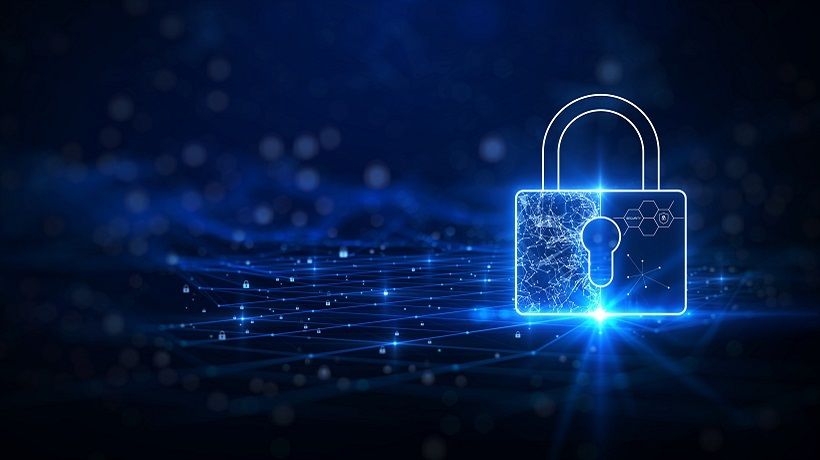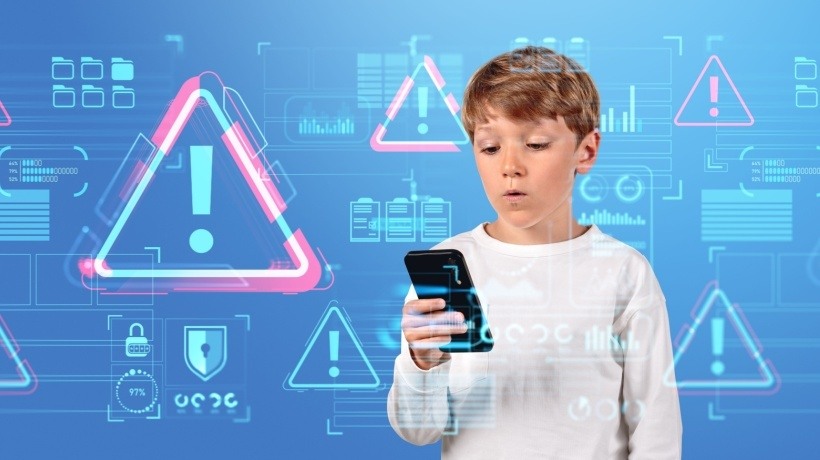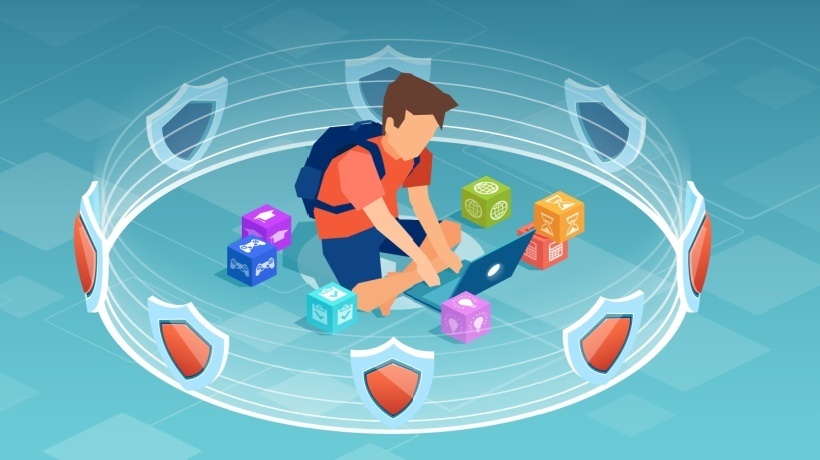Why Is Cybersecurity So Important?
Cybersecurity is the application of technologies, software, capabilities, strategies, and processes to protect or recover systems, devices, applications, or networks from digital attacks. The digital attacks aim to access, steal, and modify sensitive data, interrupt workflows, and make a quick buck.
- To compromise the confidentiality, security, and availability of the data, hackers employ various attack techniques against individuals and companies.
- Cyberattacks on confidentiality are planned to steal or expose sensitive data, such as personally identifiable information.
- Integrity attacks are intended to destroy operations and cause reputational harm.
- Attacks against availability are designed to deny people access to data.
A cyberattack could be the precursor to identity theft, extortion, and the loss of valuable personal data (such as friends and family photos at the personal level). An attack could result in information loss, production disorder, corporate espionage, regulatory censure, ransom demands, and loss of prominence at the corporate level. Cyber threat detection, cleanup, and investigation are accelerated by a unified, automated, and practical approach to cybersecurity.
What Is The Importance Of Cybersecurity?
Government, security agencies, healthcare or medical organizations, and financial and business entities collect, process, and keep massive quantities of personal information on computers and other devices. A substantial amount of this data may contain sensitive information, such as personal information, intellectual property, financial records, or other forms of data for which unlawful access or disclosure might have severe repercussions.
Organizations transport sensitive data over networks and other devices in business. Cybersecurity is the discipline dedicated to securing this information and the technologies used to handle or store it. As the frequency and complexity of cyberattacks increase, businesses and institutions, especially those entrusted with protecting health, financial, or national security, must protect their sensitive business data. The nation’s senior intelligence official warned as earlier as March 2013 that cyberattacks and digital spying pose the most significant threat to national security, surpassing terrorism.
What Are The Challenges Of Cybersecurity?
1. The Internet of Things (IoT)
The internet is no longer a network consisting solely of internet devices such as routers, switches, servers, computers, and printers. The IoT is quickly replacing it. Internet-enabled electronic and electrical gadgets include refrigerators, televisions, cameras, automobiles, washing machines, and light bulbs. While the Internet of Things has generated the countless potential for connectivity, it has also brought a magnitude and quantity of gaps never before seen. There are many more possible entrance sites. Cybercriminals can take over these machines to launch a DDoS assault.
2. Rapidly Evolving Cyber Risks
Information technology is perhaps the industry with the most rapid rate of change globally. A cutting-edge technology five years ago may be on the verge of obsolescence today. With new technologies come new threats and attack vectors, making it difficult for enterprises to stay on top of and adapt their security policies. This is mainly reflected in smaller businesses or companies lacking significant IT, security, and compliance departments.
3. Personal Data Collection
Organizations collect, process, and retain vast volumes of confidential information from users, a substantial percentage of which may be considered sensitive. Even tiny businesses may accumulate thousands of client data in just a few months. With more data in their possession, the possibility of a cybercriminal acquiring the data is a constant issue.
4. State-Level Or Organized Hacker Groups
Cyber assaults are no longer the exclusive domain of a computer whiz holed up in a basement, clawing at a company’s cyber defenses. Today’s threat actors are more organized and methodical, ranging from Anonymous-style advocacy organizations to entire government agencies devoted to cyberespionage, cyberwarfare, and cyberterrorism.
5. Remote Employment
The COVID-19 epidemic promoted the normalcy of remote work, indicating that many positions do not require employees to be in the office space. However, remote work poses cyber hazards. Traveling employees who use public WiFi might connect to a malicious hotspot and expose sensitive corporate data to attackers. Working outside of the office increases the likelihood of eavesdropping and gadget theft.
6. Superfast Internet
The internet has permitted the real-time sharing of data for decades. Internet speed has increased tremendously over the years, and increased bandwidth is now widely available, letting malicious players upload vast amounts of data in minutes.
7. Bring Your Own Device (BYOD)
BYOD policies lower the expense of procuring devices for the enterprise. However, these same devices may serve as an entry point for malware into an enterprise. And BYOD may not be subject to the same level of scrutiny and control as devices controlled by the organization.
Cybersecurity Management
SafeOnline.org proposes focusing on the most critical cybersecurity in which a company's or organization’s leadership prioritizes cybersecurity management throughout all business operations. According to the NCSA, companies must be ready to "respond to the unavoidable cyber disaster, restore regular operations, and maintain their assets and prominence." The NCSA’s guidelines for performing cyber risk assessments highlight three key areas:
- Identifying your organization’s "crown jewels" or the most crucial assets and essential information requiring protection
- Specifying the cyber threats and possible risks confronting that information
- Highlighting the damage your organization would incur if that data were lost or improperly disclosed
Cyber risk assessments should also consider any requirements that affect your organization’s gathering, maintaining, and securing data, such as PCI-DSS, SOX, HIPAA, and FISMA. Formulate a plan to manage cyber risk, safeguard the exposed or identified data in your assessment, and identify and respond effectively to security events. This strategy should include the processes and technology necessary to develop a sophisticated cybersecurity program. As an ever-changing sector, cybersecurity best practices must adapt to the increasingly complex attacks perpetrated by cybercriminals.
The most vigorous defense against cybercriminals seeking access to your company’s sensitive data is a combination of reasonable cybersecurity procedures and a security-conscious workforce. Start small and prioritize your most critical data; as your cybersecurity program improves, you may increase your efforts.
Types Of Cyber Threats
The process of upgrading changing technologies, security trends, and threats is a problem. However, to secure information and other types of property against cyber assaults, it is essential. Cyber threats might include:
- Malware is any file or software that may harm a computer user, such as computer virus programs, spyware, worms, and checkered cheetahs
- Ransomware attacks inject a type of ransomware that encrypts and locks the victim’s data and demands money to decrypt and unlock them
- Social engineering is a manual attack that fools people into overstepping security standards to access sensitive and protected data
- Phishing is a type of fraudulent activity in which phony emails resembling legitimate emails are sent to steal sensitive information, such as login credentials and credit card details
Key Factors
Security operations must be coordinated throughout the whole information system to protect sensitive data, including:
- Application security
- Information security [1]
- Network security [2]
- Business continuity planning (BCP) and disaster recovery [3]
- Operational security [4]
- End user training
Keeping up with the ever-changing security risks in cybersecurity may be difficult. The standard approach consisted of focusing resources on vital system components and safeguarding against the most significant potential risks, which meant that details were not protected and systems were not protected against cyber threats.
Advantages
- Business malware security, ransomware, phishing and social technology
- Data and network security
- Unlicensed users prevention
- Improves recovery time after a violation
- End user security
- Enhanced product trust for developers and consumers alike
Challenges
Management and changing cybersecurity techniques continue to challenge cybersecurity. There is no evidence for decreasing cyberattacks. Besides, increased attack entrances increase the need for networks and devices to be guarded.
The emerging existence of security threats is one of the most complicated aspects of cybersafety. As new technologies arise, new approaches to attacks are being developed, and technology is being used differently. Continued improvements and improvement in attacks will pressure organizations to update their procedures to defend themselves. This also ensures that all cybersecurity components are regularly updated to protect against future vulnerabilities. For smaller entities, this can be extremely difficult.
Furthermore, a business might obtain a vast number of possible data on people involved in one of its services today. The possibility of a cyberattacker who wants to steal personal information is another problem, with more data collected. For example, a company that stores personal data in the cloud may be vulnerable to a ransomware attack and should do everything possible to avoid a cloud breakdown. Cybersecurity should also cover end user training because an employee may inadvertently carry a virus into the workplace on their laptop, smartphone or device [5].
A job shortage also entails a big problem for cybersecurity. As data growth for organizations expands, more cybersecurity staff must analyze, manage, and respond to incidents. Two million unfulfilled cybersecurity jobs are projected worldwide. Cybersecurity companies also predict that they will generate up to 3.5 million unfilled cybersecurity posts by 2021. However, new advances are being made in machine learning and Artificial Intelligence (AI) to help organize and process data—but not to the effect necessary.
Automation
AI and computer education can be used in areas with high-volume data streams and fields like:
- Data correlation
Concentrating on data organization, detecting potential threats within data, and predicting next phase attacks - Infection detection
Focuses on data analysis through a protection framework, menaces, and safety safeguards - Defense generation
Without stressing capital. - Protections are introduced
Vendors
Cybersecurity services typically use endpoint, network, and automated security for threats and prevention of data loss. Cisco, McAfee, and Trend Micro are three widely recognized cybersecurity vendors.
Cisco uses networks to allow customers to use firewalls, VPNs, and advanced malware defense with email and endpoint security support. Cisco supports malware blocking in real time as well.
For customers and business users, McAfee makes cybersecurity goods. McAfee supports security on phones, business clouds, the network, web, and server systems. It also offers data security and encryption.
Trend Micro is a malware supplier that defends web, hybrid, SaaS, and IoT against threats. Trend Micro offers endpoint, email, and network security for consumers.
Cybersecurity Jobs
As cyber threats persist, individuals need cybersecurity knowledge, hardware and software expertise, and knowledge of emerging threats, including IoT threats. Computer specialists and IT professionals are needed in security jobs, such as:
- Chief Security Information Officer (CISO)
This person implements the organization’s security program and manages operations in the IT security department - Safety engineer
This individual protects the business assets against threats, focusing on IT infrastructure quality control - Security architect
The individual is responsible for the planning, research, design, testing, maintenance, and support of the critical infrastructure of an organization - Security analyst
This person has many responsibilities, including preparing and monitoring security measures, protecting digital files, and conducting internal and external security audits
Advisory organizations advocate a more constructive and adaptive approach to deal with the current climate. For example, in its Risk Assessment Process, the National Institute of Standard and Technology (NIST) has developed updated guides proposing a move towards ongoing tracking and real-time assessments.
In April 2018, version 1.1 of the Critical Infrastructure Enhancement System was released. Each industry, including federal and state governments, can follow a voluntary cybersecurity framework developed for banks, communications, the defense and energy industries. President Donald Trump gave an executive order to enact the NIST Cyber Security System (NIST CSF) by federal agencies in May 2017.
Investments in cybersecurity technology and services continue to grow as a result of security threats. Gartner had previously estimated that global spending on goods and services for information security would rise to $114 billion in 2018 and increase by 8.7% to $124 billion in 2019. In 2019 Gartner also anticipated growth of 11% for the Middle East and North Africa in company safety and risk management spending by 2020.
References:
[1] What is Information Security? Certifications and Jobs
[2] What is Network Security? Definition, Tools and Jobs
[3] What is a Business Continuity Plan (BCP)?
[4] What is Operational Security (OPSEC)?
[5] Top 15 Best Laptops You Can Buy This Year







